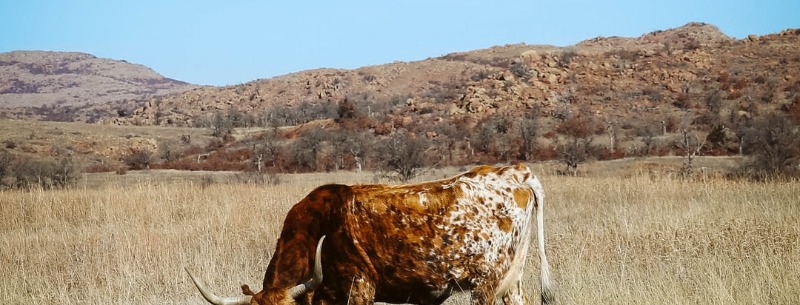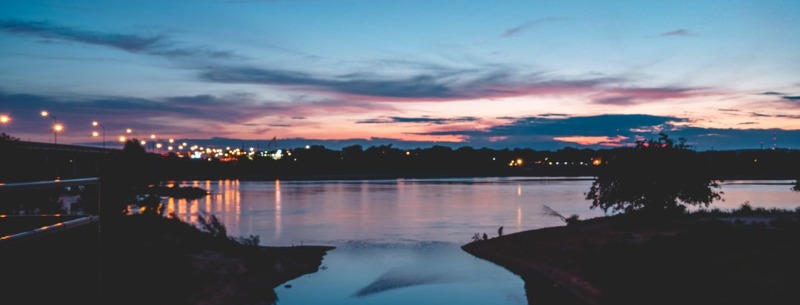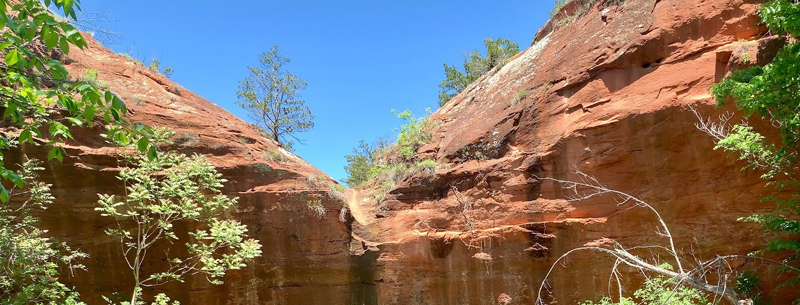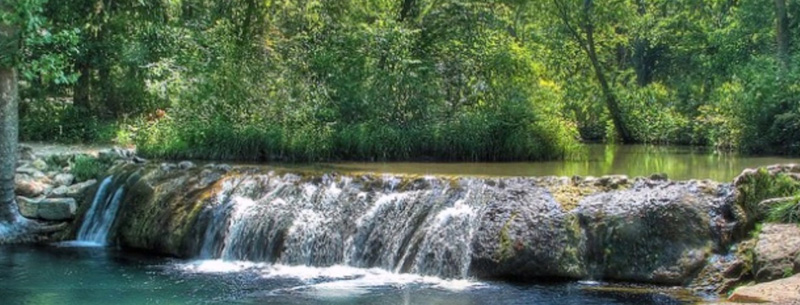2024 Tulsa Visitors Guide
It may be best known for its deep Native American ties and former oil glory days when “black gold” made many a resident rich, drawing them to build palatial mansions along the Arkansas River, but Tulsa is about much more than oil and wealth.
The city has grown into a mini-metropolis of sorts with nearly a half-million residents living in and around its official boundaries. Listed as one of America’s Most Livable Communities by the Partners for Livable Communities, Tulsa has evolved into an area known for its beauty, educated populace, cultural diversity, artistic ties, and pro-business policies. Considered a fantastic place to live and work, Tulsa has established itself as a well-rounded city offering its residents a wealth of options.
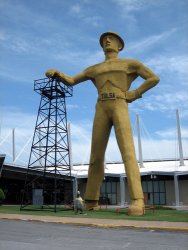
With its own zoo, fantastic outdoor opportunities, museums, restaurants, and more, the Tulsa area has recreated itself while managing to preserve and celebrate its former roots. Don’t be mistaken though, oil is still a big deal in this town if for nothing more than the legacy it’s left behind. Today, however, diversification is the buzzword.
Although two refineries still operate within Tulsa, the city is now more known for its urban renewal efforts that are placing mix-use development into the heart of the city and along its sprawling riverfront area. It’s also noted for its more than 40 miles of riverfront along the Arkansas River, creating a natural beauty that draws new residents and visitors alike. The city has used this to its advantage, creating the famous River Parks, a 20-mile stretch of parkland that is a huge destination for outdoor recreation that includes trails, playgrounds, fountains, sculptures, and more. The river is also home to the city’s July 4 festivities, fall concerts, and more.
When it comes to getting out, the Tulsa area is known for its eclectic mix of restaurants and its incredible arts scene. With the Tulsa Ballet and the Tulsa Orchestra plus a number of galleries, museums, and historic sites, the arts and culture haven’t been lost among the oil rigs in this Oklahoma City.
Education and employment round out Tulsa’s environment. With a number of institutes of higher learning calling this area home, including the University of Oklahoma, the University of Tulsa, and Oral Roberts University, higher education is a strong priority. Considering the proximity for training, the city is also home to some major employers in such industries as computers, communications, technology, and more.
Fast Facts
- Location: Northeast portion of Oklahoma along the Arkansas River.
- Population: 393,049, according to the 2000 Census
- Median resident age: 34.5
- Median household income: $35,402
- Median house sale price: $122,885
- Average annual rainfall: 39.2 inches
- Average annual snowfall: 9.1 inches
- Average annual temperature: 39.2 degrees Fahrenheit in January; and 83 degrees in July.
Tulsa Recreation & Leisure
When it comes to getting out and playing, Tulsa is as close to paradise as it gets. With its River Parks system that covers about 20 miles of the Arkansas River, there’s no reason to stay inside in this Oklahoma town.
The city’s park system is known for its fountains and sculptures and scenic settings just right for leisurely walks. The parks are also home to live concerts, fireworks displays and more. The city’s Turkey Mountain Urban Wilderness Area is home to some great outdoor activities as well. Hikers, bikers, and horse enthusiasts love this area as do fishing fanatics and boaters. In addition to its extensive parks system, the city also boasts its own zoo and a number of other destinations to draw residents and visitors alike outside to enjoy the scenery.
The city’s historic sites are many and include such stops as the Boston Avenue Church and a number of 1920s landmarks. The art deco influence in Tulsa is great with a number of buildings bearing the style in high fashion. During its oil boom, Tulsa’s wealth drew many famous builders into the city, creating buildings that still serve as landmarks today. Architects including Frank Lloyd Wright and Barry Byrne made their mark on the city, adding to the style. Architectural marvels to see include the Warehouse Market, Spotlight Theater, and the Tulsa Union Depot.
Other sites include the historic end of the “Trail of Tears”, which today is located at 18th and Cheyenne in downtown, and the Golden Driller statue that celebrates the city’s rich oil roots. The statue is located at 21st Street and Pittsburgh Avenue.
Tulsa Arts
Anyone who thinks Tulsa doesn’t embrace the arts should think again. This city has from its start enjoyed and funded many cultural pursuits. In fact, the city is home to nationally-recognized performing arts companies including the Tulsa Ballet, the Tulsa Opera, and even an orchestra. The different groups offer a performance calendar that keeps each year busy with cultural opportunities. In addition, the city is home to a number of galleries and museums paying homage to the visual and performing arts and even the city’s rich past.
Top arts destinations include the Philbrook Museum of Art, which is noted for its Native American, Renaissance and Southeast Asian art, and the Gilcrease Museum, which is celebrating for hosting the world’s largest collection of Western and Native American arts and artifacts. The city also offers a host of live theater performances, live music and more.
Tulsa Restaurant Guide
Going hungry in Tulsa is hard to do. With literally hundreds of restaurants catering to all different tastes, the flavors that can be found here are as diverse as the landscape. National chain eateries such as Red Lobster, Steak ‘n’ Shake and Romano’s Macaroni Grill sit alongside local favorites such as Albert G’s Bar-B-Q and Johnnie’s of Tulsa.
Tulsa Communities
Like many cities, Tulsa is broken up into a grid of sorts with residential areas in the downtown, north, south, east and west. The city as a whole offers an eclectic mix of old-style houses and rambling estates to new, more modernized construction. Neighborhoods here range from old and established to more modern subdivisions wrestling to create identities of their own. Communities on the outskirts of Tulsa also play a large role in the city with their residents working and playing within the big city on a regular basis.
Broken Arrow
Located outside of Tulsa proper, this area is considered the city’s biggest bedroom community. It boasts new housing, apartments, retail and more than 75,000 residents.
Brookside
A popular dining, entertainment, and shopping district in midtown, this neighborhood runs from the Arkansas River to Peoria. The neighborhood is old and similar to Cherry Street with the exception of its 35 restaurants and nightclubs that make it an after-hours designation.
Cherry Street
Located in Midtown, this neighborhood is near downtown and loved by those who appreciate a quick commute and historic roots. It is known for its restaurants, antique shops and more. It is the home of many 1920s and 30s homes.
East Tulsa
This portion of the city is known for its suburban atmosphere within the city limits. It is home to the Eastland Mall and a wide variety of small neighborhoods that range from the affordable to the very upscale.
Greenwood
Located in north Tulsa, this area is the city’s traditional African-American community. It is home to the Oklahoma Jazz Hall of Fame, Langston University-Tulsa, Mohawk Park. It’s loved for its proximity to downtown, the airport, and the zoo.
Holiday Hills
This neighborhood in south Tulsa is near shopping and parks. One of its main drags, Urbana Avenue, used to be the landing strip for the old Commercial airport in the 1950s.
Hoover
This neighborhood covers the area between 21st and 31st from Sheridan to Yale. Its homes were built in the 1950s and 60s.
Kendall-Whittier
This shopping area is surrounded by neighborhoods and is known as Tulsa’s oldest “suburban” shopping area. It is characterized by its red brick and the historic Circle Cinema.
Maple Ridge
This historic district is south of downtown in Midtown. The affluent area is characterized by 1920s oil baron mansions that dominate the landscape with their unusual architectural features and imposing sizes.
Midtown
This part of Tulsa is located in the heart of the city but is largely residential. It boasts homes that were built in the early 1900s and has very eclectic styles represented. Homes here range from Craftsman to ranch and Greek Revival and more. The neighborhood is known for its historic structures, parks, schools and its azalea gardens.
Southern Hills
Located on the south side of Tulsa, this upscale neighborhood is centered around Southern Hills Country Club. Many of the homes in this area are large ranches built around the course in the years that followed the major oil boom. The community is also home to Oral Roberts University.
Terwilleger Heights
This neighborhood is south and west of Utica Square. Its 1930s homes range from the very large to the quite cozy. It is known for its large trees, meandering streets and its proximity to Philbrook Museum and Woodward Park.
Uptown
This neighborhood is located just south of downtown. This part of Tulsa is the home of the famous Hotel Ambassador, a landmark that served as a temporary home for oil barons as they were building their mansions in other parts of the city. The area is also home to a number of restaurants and other attractions.
Utica Square
This historic neighborhood was first developed in the 1900s as the oil industry boomed. It is known for the Utica Square shopping area, which boasts such retailers as Restoration Hardware and Saks Fifth Avenue. It also includes a number of early 1900s homes that display a wide variety of styles.
West Tulsa
This section of the city is known for its oil past. Two refineries still operate on the west bank of the river and the area is home to many wooded, hilly neighborhoods. One of the biggest features of this area is the new Riverwalk, which features shops and restaurants and an outdoor, riverfront amphitheater.
Woodland Hills
This community in the southeast portion of Tulsa surrounds the state’s biggest shopping mall, which is named after the residential neighborhood.
